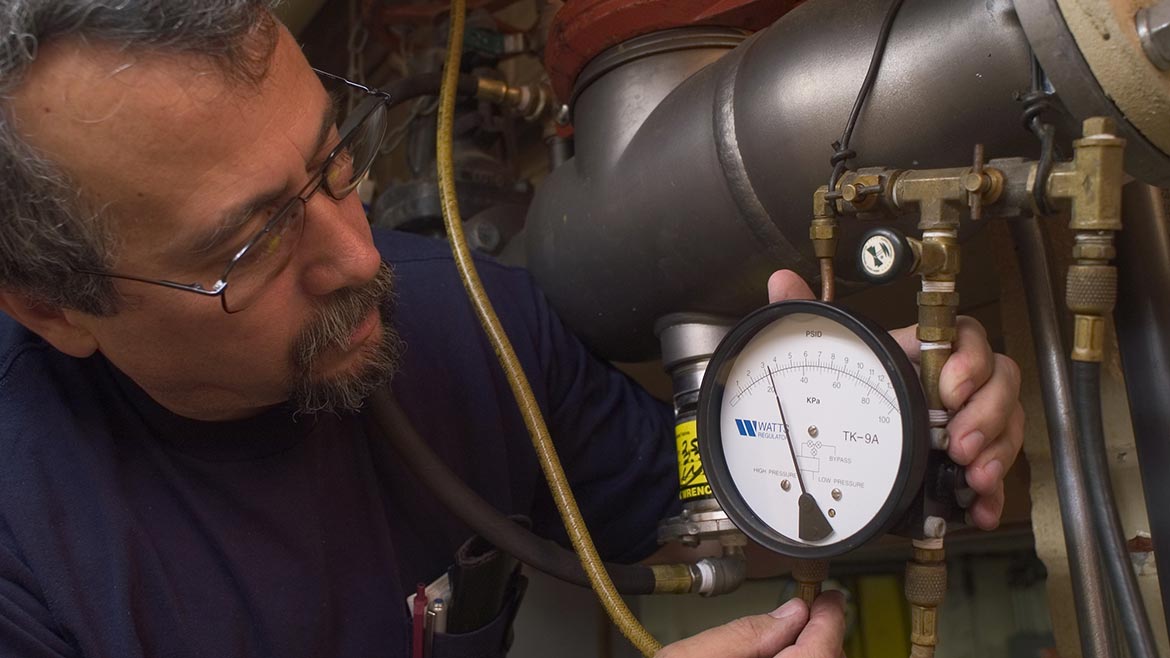Do you find yourself searching for info about Is backflow testing necessary??

Yes, you require to backflow examination your home's water supply to make sure that the water is without toxins as well as unsafe degrees of chemicals. You need to not attempt to execute backflow testing on your very own because of the devices required as well as space for mistake. We recommend that you call a specialist plumber every number of years to test your water.
Backflow Can Effect Both You and also Your City
Due to the fact that harmful heartburn can impact the public water supply in addition to a single building, lots of cities develop heartburn standards. The good news is, contemporary cities have backflow devices in position that protect the supply of water that comes from a lot of residences and also commercial homes. The actual threat comes from watering systems, which can damage the water supply with toxic fertilizers, manure, and other chemicals.
What Causes Backflow?
A normal cause of backflow is a loss of water stress that triggers the water to siphon back right into the water supply. After some time, there is a loss in water pressure and the tube starts to suck the water back into the water supply. As you can picture, there are now chemicals from the paint that are getting in the water supply, possibly posturing a danger.
Backflow Screening is Required by Legislation in Particular Cities
Depending on where you live, you may actually be needed by regulation to backflow examination your legislation. Iowa City maintains a record of all residential or commercial properties served by the city's water supply. The city calls for that particular "high-hazard" facilities undertake backflow screening. Sometimes, homes such as residences as well as apartment are affected.
You Can Avoid Backflow
The major purpose of a backflow device is to stop water from flowing in reverse right into your water supply. Plumbers mount the device on the pipelines in your house to make sure that the water only flows in the appropriate direction.
What is Backflow?
Basically, backflow is when water moves upwards-- the opposite direction in the plumbing system. This is also called "backpressure." When the water moves in this instructions, it can mix with dangerous toxic substances and posture a risk.
Call a Plumber to Test for Backflow Prior To It is Too Late
While it could appear grim, infected water can bring about dreadful bacterial as well as viral infections that are challenging to treat. A plumbing company can quickly examine your residence's water to establish if there are any kind of hazardous chemical levels. If you can prevent the torment that comes from consuming contaminated water, the little financial investment is. And if you do find that your water has high degrees of toxins, a plumber can quickly mount a heartburn prevention device.
Yes, you require to backflow test your residence's water supply to guarantee that the water is complimentary of toxic substances and also damaging levels of chemicals. Many cities establish heartburn standards due to the fact that hazardous backflow can impact the public water supply in addition to a solitary building. A typical reason of backflow is a loss of water pressure that triggers the water to siphon back into the water supply. After some time, there is a loss in water stress and the tube begins to draw the water back into the water supply. The major function of a heartburn device is to protect against water from flowing in reverse into your water supply.
WHY DOES BACKFLOW TESTING NEED TO BE DONE EVERY YEAR
What Is Backflow?
Toxic gas backing up into a building is one example of potential backflow issues, but backflow can occur in many other ways.
Backflow is generally referred to as the reversal of a liquid or gas in a plumbing system.
Most issues for the public occur with backflow resulting in contaminated drinking water. If you look up backflow issues online you’ll probably find references to “potable” water. That means drinking water.
There have been backflow issues in the past with drinking water. Chemicals, sewage and other contaminants have found their way into drinking water causing health issues for those that count on the fresh water.
What Causes Backflow?
In a residence or commercial building water generally flows one way. This normal flow is usually driven by consistent pressure in the water and waste system.
Anything that changes the normal pressure in the system can lead to backflow.
Fire hydrant use or malfunction can reverse the normal pressure in the system on a city line, but backflow can occur in a number of different ways.
Sometimes backpressure might be caused by someone using a garden hose and submerging the end of the hose in a pool of liquid. If pressure is lost the flow could reverse and contaminants could be released into the drinking water.
Anytime there is a connection between contaminants and the drinking water there is potential for a backflow issue. Sometimes these connections are not immediately obvious like the garden hose connecting to a building’s drinking water supply.
Backflow Regulations
The Environmental Protection Agency (EPA) provides guidelines and regulations for state and local governments regarding backflow. State and local governments also have their own guidelines and regulations for backflow prevention.
Arizona has its own backflow regulations.
Due to issues with backflow in the past, regulations require backflow preventer devices to be used in nearly all residential and commercial buildings.
A backflow preventer is a device that prevents backflow as cross-connection points where potential backflow issues may occur.
While backflow is not a common occurrence, preventers are in place to make sure there is no contamination should something malfunction or go wrong with a building’s water supply.

As an enthusiastic reader on Backflow Testing, I figured sharing that short article was beneficial. So long as you enjoyed our blog post plz don't forget to pass it around. Thanks for your time invested reading it.
Get Offer